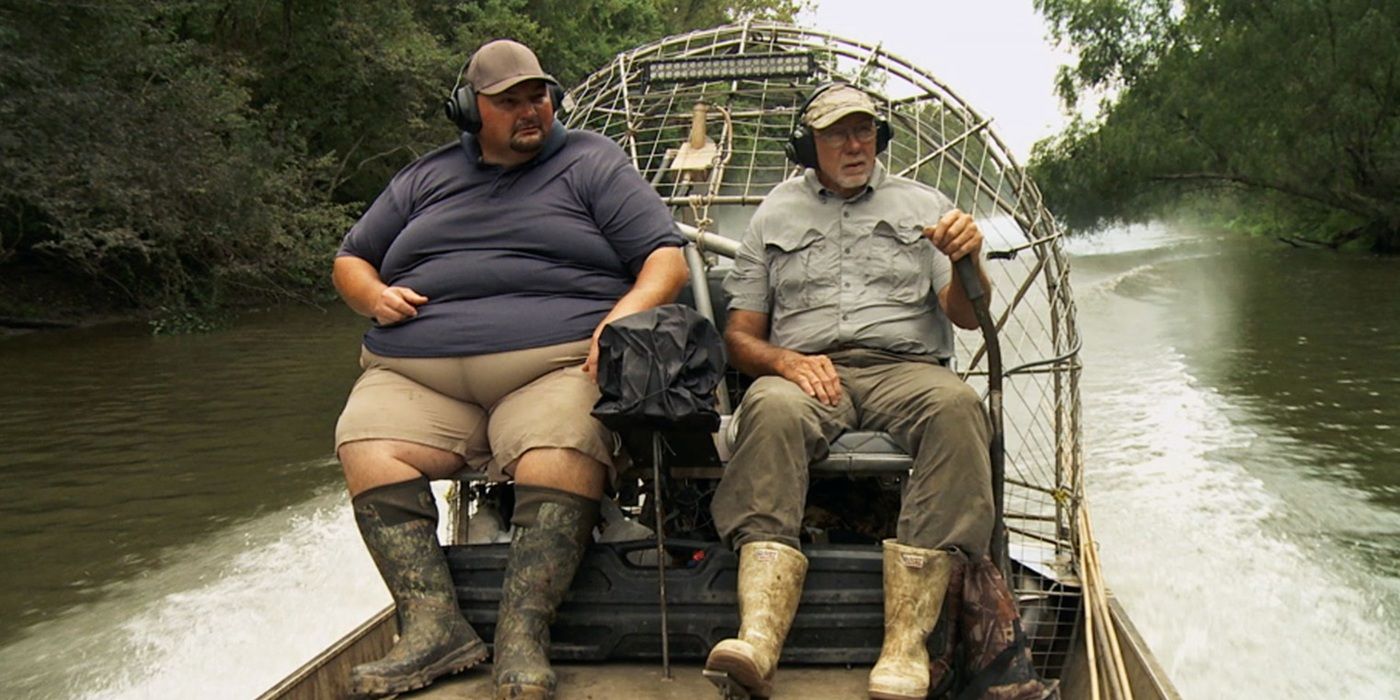Gator Hunting vs. Python Hunting – Who Makes More Money?

In America’s swamps, two apex predators define two very distinct paydays: alligators in Louisiana and pythons in Florida. Both are dangerous to catch, regulated by the states to preserve the ecosystem and wildlife through hunting, and increasingly popular to watch. But beyond the thrill of the chase, a deeper question lingers behind the cameras, especially by those fascinated by the profession itself: Which kind of hunter actually makes more money?
On one side, you have gator hunters in Louisiana pulling in centuries-old traditions. On the other hand, python hunters are fighting an ecological crisis, and becoming more visible by the year, in the Everglades. Each group has its own economic structure. Gator hunters are typically paid per foot or pound, depending on the meat and hide quality. Python hunters in Florida’s Everglades, by contrast, work under a bounty system — paid hourly and per snake, with occasional bonuses. But those are the base rates.
The real money, however, often comes when a camera crew like Swamp People or Python Hunters, or Guardians of the Glades shows up. And when it does, everything, from paychecks to personal branding, shifts dramatically.
Both Gator and Python Hunting Offer Profit Potential for Those Equipped To Handle It
Gator hunters working independently operate under Louisiana’s tag system, and they’re issued a set number of tags per season. As per TLW and backed up by a gator-hunter on Reddit, this allows them to sell harvested gators for around $30 to $50 per foot, depending on size and quality. A 10-foot alligator, therefore, could bring in $500–$1,000, with additional income from meat sales. But it’s safe to believe that because tags are limited and season-bound, the total earnings have to be capped somewhere, even for experienced hunters.
It’s hard, physical labor, and unless a person controls a large section of swampland against which one can bag hundreds or even thousands of location-specific tags, or owns processing infrastructure, it could be hard to live off year-round. Hunters like Big T on Swamp People or Liz Cavalier, the Gator Queen, have struggled to profit as much as Landry, who owns significant land and infrastructure.
Python hunting in Florida, by contrast, is structured around control rather than harvest. As per BBC, state-hired contractors, like Amy Siewe, who is now very famous on social media, earn around $13 to $18 per hour, plus bounties — $50 per snake under 4 feet, $25 per extra foot, and $200 for active nests. Catching one 12-foot snake, therefore, with a nest might net about $400. But that’s inconsistent and python hunting, in comparison to gator-hunting, is more time-consuming, physically exhausting, as a python once lost can be stealthier, and success could suddenly be far from guaranteed. Contractors are limited to state lands and must follow strict euthanasia protocols, which adds logistical pressure as well.
What ‘Swamp People’ Gator and Python Hunters Make on the Show
Once hunters step into the realm of television, the numbers shift sharply. Swamp People cast members — especially long-timers like Troy Landry, his sons, or regulars old-timers like Willie Edwards — are reported to earn between $10,000 and $30,000 per episode. With seasons running 15–20 episodes, that means $150,000 to over $400,000 per season for top-tier personalities. And that’s just for gator hunting in Louisiana. The Swamp People: Serpent Invasion spin-off sends some of those same cast members to hunt pythons in Florida, and while the exact figures for that aren’t known, it’s highly likely the paycheck doesn’t change and is possibly higher because Serpent Invasion is presented to be a lot more tactical than gator-hunting.
For python hunters featured on shows like Guardians of the Glades or Python Hunters, the exact figures are unknown, but the incentive model is likely similar. Logically, it is not about how many snakes you catch, and instead it’s about how often you’re on the screen, how central your storyline is, and how well your persona connects with viewers. If you’re the face of an episode, you’re getting paid. If not, you’re background. That’s what makes TV hunting both a performance and attention economy, and fortunately or unfortunately, earnings follow attention when you’re a hunter on TV, not effort.
This is where visibility pays its biggest dividends. The same Redditor, who claims to be the cousin of the King of the Swamp, wrote that Troy Landry has mentioned that “money from sponsors and commercials” is what keeps him filming, suggesting that the Swamp People’s paycheck is only part of the income stream. With millions of viewers per season, cast members become brand ambassadors for hunting gear, outdoor apparel, local businesses, and even tourism. Their names become assets. They do speaking gigs, sell merchandise, and command fees for appearances. That’s not possible for off-screen hunters stuck in the bounty or freelance system.
Python hunters who become public figures, like Amy Siewe, tap into the same ecosystem—her Instagram is filled with tips and guidance for fellow enthusiasts. By building a niche persona (The Python Huntress), she went from contractor to influencer. She now runs her own guided hunts, sells products, and is featured in national news segments. Hunters like Dusty Crum have done the same through Guardians of the Glades. Without this visibility, the ceiling stays low, but with it, a hunter becomes a brand, and brands scale far faster than per-foot payouts ever will.
The Verdict: Who Earns More? ‘Swamp People’ Gator Hunters or Python Hunters?
It’s safe to conclude that gator hunters on Swamp People earn the most, by a long shot. Between per-episode pay, multi-season contracts, and sponsor deals, their income must far exceed that of python hunters, even on other shows. While python hunting has grown in visibility thanks to Serpent Invasion, Guardians of the Glades, and influencers like Amy Siewe, it still doesn’t match the scale, reach, or financial ecosystem of Louisiana’s gator-hunting stars. In fact, it’s the government that holds a contest each year and pays $30,000 to the hunter who catches the longest python, just so the ecosystem and wildlife can be protected. For hunters not on TV, however, neither path is wildly profitable — both require backbreaking work with capped returns. But gator hunting, due to established markets and meat value, edges out python hunting in base earnings, even without a camera crew.
Swamp People Season 16 recently concluded, and all seasons of the show are now available to stream on the History Channel. Swamp People: Serpent Invasion Season 6 will air beginning in 2026.








